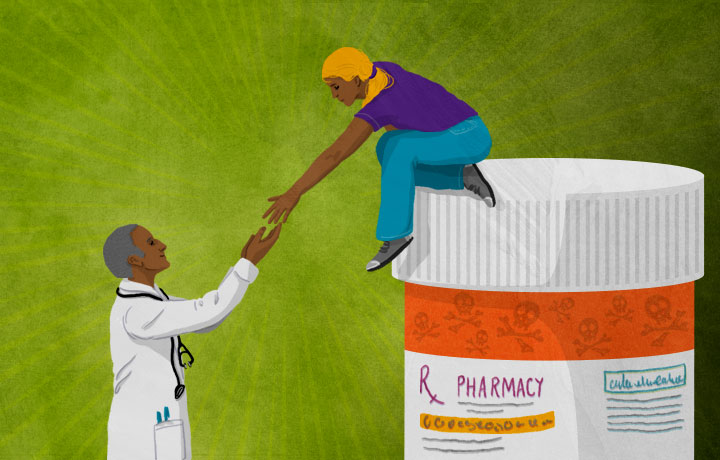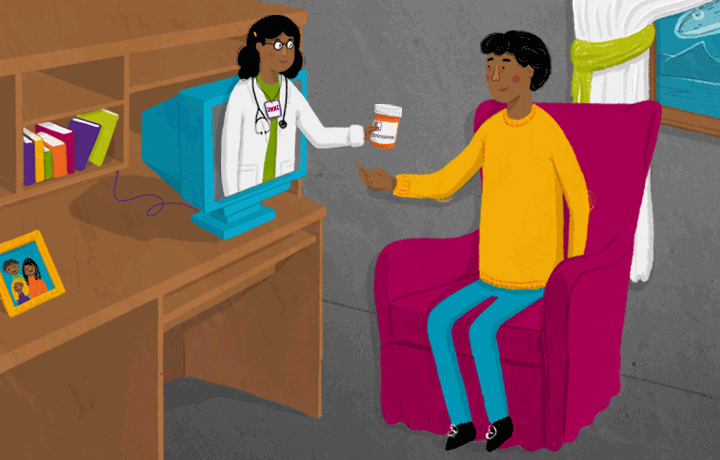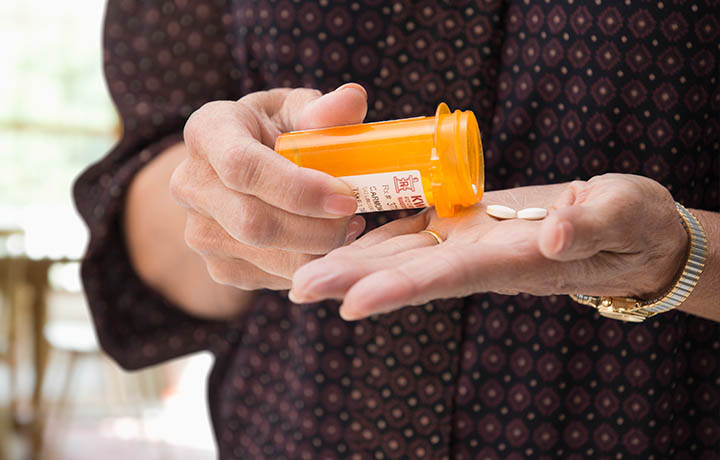Article
A smarter way to prescribe opioids
By Lia Novotny | April 20, 2018

And while physicians certainly have an essential role in reducing unnecessary exposure to opioids, those rigid rules can hamper their ability to respond to the nuances of an individual patient's needs or to share decision making with a patient.
athenaInsight spoke recently with Sarah Wakeman, M.D., medical director of the Substance Use Disorders Initiative at Massachusetts General Hospital, and David Barash, M.D., emergency physician at Emerson Hospital. Barash also serves as chief medical officer and executive director for Global Health at GE Foundation, which in May 2017 made a $15 million commitment toward solving the opioid crisis in GE's new hometown of Boston.
Wakeman and Barash discuss how they've changed their approach in prescribing opioids, from screening for risk factors to setting expectations to accommodating chronic pain patients in a more nuanced way — and how to educate physicians and patients to embrace that approach.
Here are edited excerpts from their observations.
On screening and shared decision-making
Wakeman: With all of the conversation around opioids, I want to be careful that we have a balanced approach [in prescribing]. The answer isn't no opioids, the answer is that we need to be thoughtful. These medications have tremendous benefit in terms of pain relief, and they also have a lot of risk – and that risk varies tremendously from individual to individual. We can't perfectly assess personal risk, so we have to be much more thoughtful and really involve patients in the discussion.
Barash: As an emergency physician mostly prescribing opioids for acute pain, I specifically ask about risk factors, about family history of addiction to alcohol or other drugs, including opioids. And if the answer is yes, then that obviously raises the risk, and I engage them in a conversation, explain the genetic component, explain that we want to be cautious.
Wakeman: As David said, the first step is screening people for risk. And there are validated screening tools that include things like family history of substance use disorder, personal history of substance use disorder, their age, history of trauma, particularly sexual abuse when they were young, co-occurring psychiatric illness. Higher risk doesn't mean you wouldn't prescribe an opioid if they had severe pain or immediately after a surgery. It just means you have a different conversation around managing it. The risk evaluation is just the first step in the conversation.
Barash: Part of that conversation is about expectations, mine and theirs, around what is realistic. If a patient comes to the emergency department with an ankle fracture, I explain that pain is part of illness or injury, that our goal is to reduce pain to a manageable level, not eliminate it completely. I talk about icing and elevation, non-narcotic pain relievers, and complementary treatments like acupuncture. I encourage them to consider taking the opioid pain medication only at night to help them sleep.
Wakeman: There are many acute painful conditions where we used to liberally prescribe opioids, but are now recognizing opioids are not the best first-line or even second-line treatment. We now know from the data that it's not necessarily effective from a pain standpoint, and it leads to greater exposure than is ideal.
Barash: And quite frankly in this day and age, most patients are grateful when we are cautious about opioids and don't use them reflexively as a first line. They like the reduced-opioid approach to pain. For me, it's been a journey and a change in my practice, taking a few more minutes to engage with them – and it's well worth it.
Wakeman: There's been a lot of interesting work done around shared decision-making with patients for pain management. Our obstetrics department did a study where they let patients choose how many pills they would need after a C-section. The physician let women know that, on average, a woman uses only 3-6 Oxycodone of the typical 30-day prescription. It turned out that patients by and large chose way fewer pills than the doctor would have prescribed. They just needed to bring the patient into the conversation around balancing risk and managing pain.
On opioids for chronic pain
Wakeman: The CDC guidelines have gotten a lot of attention. These guidelines are focused predominantly on when to start opioid therapy, how to do it in a safe way, how to be cautious and thoughtful around dose escalation, when to involve a pain specialist, and so on. The fact that these were intended for newly starting opioids is important because that is a very different clinical situation than managing someone who has been on chronic opioid therapy.
Barash: I will now pick up the phone and call a pain specialist for a consult, like I'd call for a cardiology consult or infectious disease. And often, not only do I get good advice on how to manage [a patient's] pain, but the pain specialist will say, “Send them to our clinic next Thursday and we'll pick it up from here."
Understanding the patient's risk is so important in guiding these conversations.
Wakeman: Understanding the patient's risk is so important in guiding these conversations. I let patients know why I'm worried, if we do prescribe opioids, how we'll know if things aren't going well. And, of course, I talk about overdose – even if someone doesn't have an addiction, accidental overdose can occur. Sometimes we even co-prescribe naloxone and make sure a family member knows how to use it, just for safety. I think doing that preemptive counseling is so crucial.
And involving family or loved ones can be really valuable. Sometimes family members can actually hold and dispense the medication if, for example, someone is in recovery but absolutely needs opioids. And we work together on a plan of how we're going to make sure this stays on track, how are we going to know if things aren't going well, how we will stay engaged.
Barash: I've done a real 180 in my thinking on this. My attitude with chronic pain patients, unfortunately, used to be “This is a challenging patient, what can I do to get them out quickly because I'm never going to have a good result." Now I spend much more time walking through their care plan with them and working through a follow-up plan in much more detail than I ever used to do before. I accept that their pain is real and I expect that I can find the tools to help them. I no longer stigmatize patients because of my fear that I cannot help them.
On policy and physician education
Wakeman: What concerns me is that across the country we're seeing these boilerplate, one-size-fits-all, "no one can be above a certain threshold" regulations. That means some people who have been on opioids for decades are being forced off their medication. That isn't based on science, and it's potentially incredibly harmful – you put someone at risk not just of withdrawal but of potentially shifting into the illicit drug market.
For those patients it really should be, again, a shared decision between the doctor and the patient around the benefits of staying on medication versus trying to taper off, making sure that you're prescribing safely and monitoring appropriately. The best approach is educating physicians and giving them the autonomy to make the important patient-by-patient decisions only they and the patient can make.
Doctors need the tools to think through the nuances of pain management.
Barash: The physicians I work with are very sensitive about this and want to do the best they can. But, because they don't spend every day like I do thinking about this, talking to people in recovery, talking and working with people like Sarah, I don't know if they've had the opportunity to change their thinking in this way. Deeper physician education could help them help patients, which is what they all want.
Wakeman: We need to compassionately take care of medical conditions with the best evidence we have, and doctors need the tools to think through the nuances of pain management and addiction treatment.
Barash: The evolution in my thinking about this topic has informed my work with the GE Foundation. As we think about opioid-related projects, I really believe we need to focus on educating physicians about how to prescribe opioids safely and educating the broader community, particularly young people, about the risks and management of opioids. We will never be able to address the opioid crisis if we don't stem the tide of new addictions.







